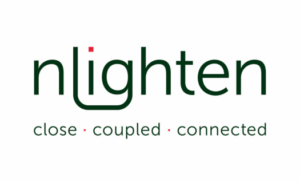The increase in WFH hours has boosted companies’ creativity. In most organisations, procedures have been developed to help employees better manage their remote tasks. These procedures have also been accompanied by the implementation of tools to make them possible. In addition to video conferencing platforms, collaborative communication solutions have seen their use skyrocket. At Incognito we wanted to try a less common alternative for coordination in a corporate environment. We were looking for an agile environment for communication. And I think we’ve found it: Discord, the gaming world’s favourite chat system.
It’s not as if we’re in Incognito all day playing games. Nor does this mean that we value video games in a negative way. Everyone around me knows that I will buy the remastered edition of Diablo II as soon as it becomes available, and that I will do the same with the eagerly awaited Diablo IV. What I mean is that if an application like Discord could be an effective alternative for massive groups of users with real-time connection needs, why couldn’t it be well suited to the world of decentralised enterprise?
"If Discord can be effective for massive groups of users with real-time connectivity needs, why not for the decentralised corporate world?"
Collaborative tools for business
It is true that the market offers other solutions that provide more functions, rules and ways of systematising work tasks. Any.do and Trello can be great task organisers. Teams and Zoom are very effective supports for group multimedia dialogue. Slack (now owned by Salesforce) has become a standard for conversation between teammates. But we lacked a much more agile and simple channel to activate a way to talk when we need to talk, see and teach when we need to, all without losing the speed of chat for quick instructions and sharing links.
Discord is a chat platform whose strength is that it allows voice and video over IP for free. It works through servers that can be public or private. Each group of people can join a public server to participate in the channels active on it or set up their own with their own rules of access and behaviour. Best of all, the low latency provides – provided the user’s internet connection is good – a very good sense of simultaneity. It is almost as if the people in a conversation were physically together. That’s exactly what we were looking for in Incognito.
"The best thing is the low latency, which gives a very good sense of simultaneity.
Three advantages of Discord
What three things do we keep from our Discord application in a corporate context?
1. Screen sharing is the key.
Being designed for the gaming world, this feature is much more optimized than in other environments. One of the users simply clicks on the corresponding button, selects what they want to share (the entire desktop, a document or a navigation tab) and opens a broadcast to which the rest of those who have access to the voice channel can join in. It is easier and faster than doing it by videoconference. The feeling, in a work environment, is one of being together looking at exactly the same thing. It is very useful for coordinating tasks in real time.
2. Organization of work by channels.
In Discord, it is very easy to create different text channels with which to order the conversation. We can enable them for work teams or for specific tasks (e.g. sharing links of interest or coordinating leisure activities). Each channel may have its own rules. To prevent abuse, it is possible to pause the number of minutes we allow members to send a message. This is great for compulsive “texters”. The other available functions are also practical: invitations, channel privacy or not, etc.
3. Friendly environment.
One of the problems that many work platforms have is that they reinvent their organization and are not easily understandable at the beginning. The learning curve is long and does not facilitate the adoption of the platform. That doesn’t happen with Discord. The context is extremely intuitive and uses utilities in a way common to any messaging platform. Once the server, channels and permissions are configured, if you know how to use WhatsApp, you know how to use Discord. The dialogues take place in a very, very similar space. We can respond to specific messages, quote members in the same way we do in Slack and, of course, we have the integration of emojis and GIFs to make conversations more dynamic.
As a platform for the world of live streaming and gaming, Discord also provides the ability to enable gift or benefit packages for users through Discord Nitro, its subscription service. In large companies, it can be a way to offer incentives for participation to enhance internal communication. Through these kinds of behavioural nudges, we will help move the conversation from the conventional channel of email to the much more agile channel of messaging.
I have written “email”. What was that?












